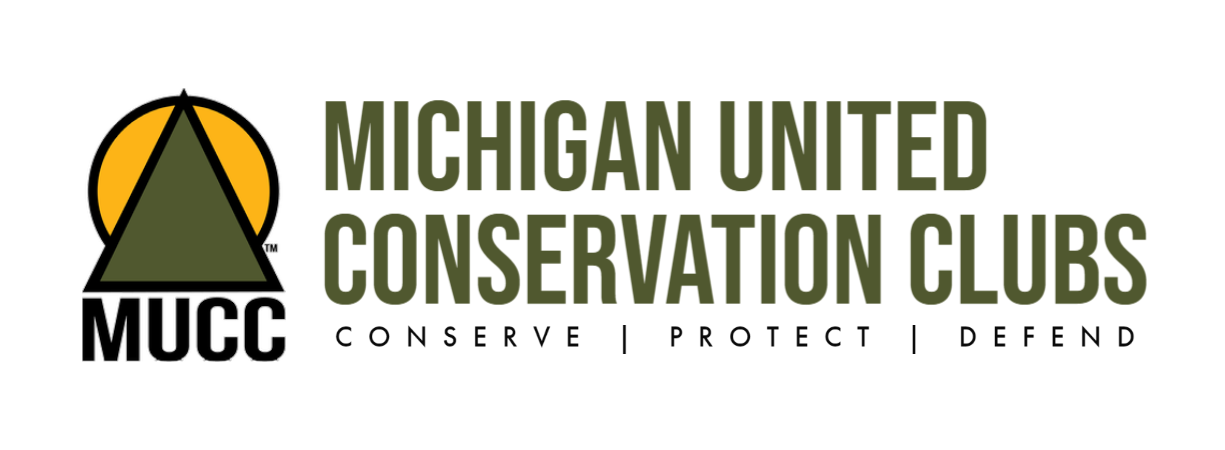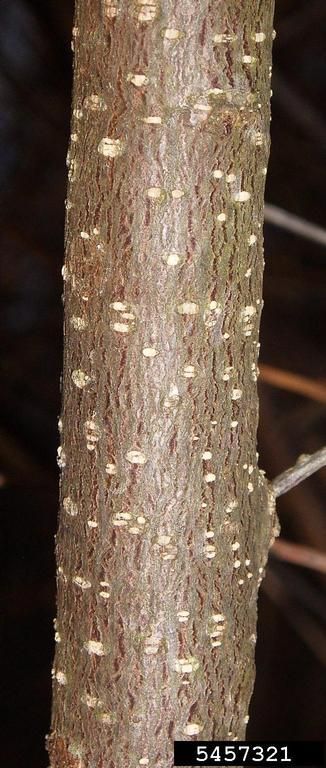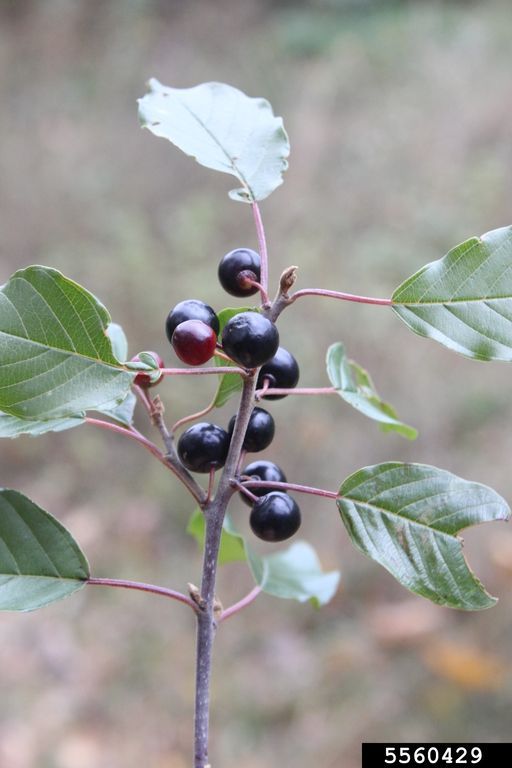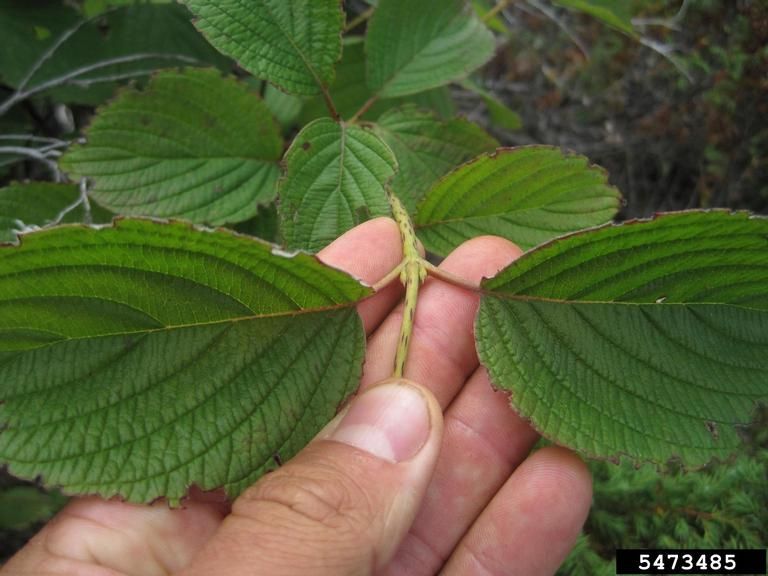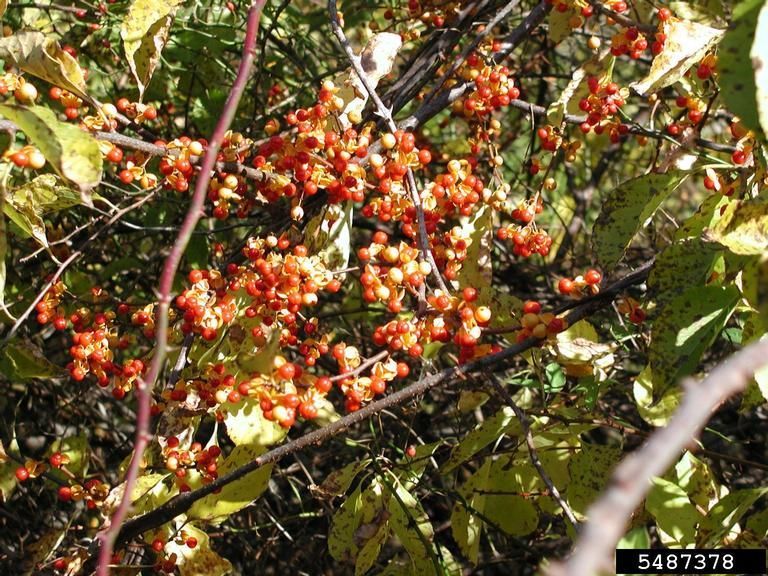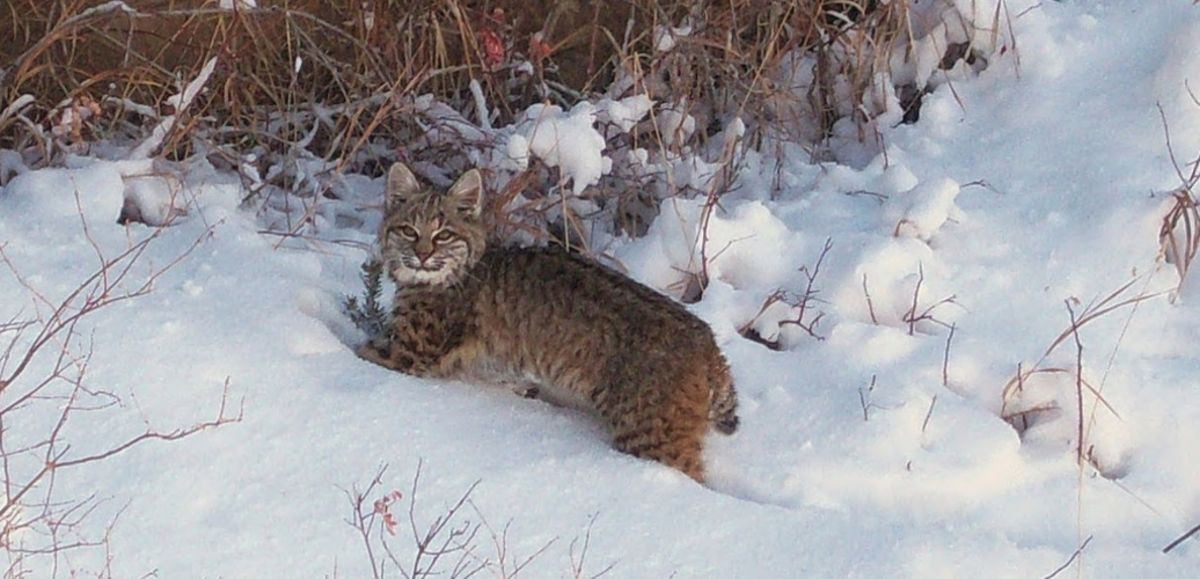Glossy Buckthorn: A Thornless Wetland Invasion
History
Originating in Europe and Asia, glossy buckthorn is a non-native species brought to the United States in the mid-1800s. The Center for Invasive Species and Ecosystem Health states translocation of this species occurred for ornamental landscaping and to create wildlife habitat and food. Unfortunately, this is a common occurrence for invasive plant species as they often offer unique colorations and patterns in gardens.
Current Status
Glossy Buckthorn is recognized by the Michigan DNR as an invasive species which spans across the Northeast and Midwest of the United States. The species commonly is found in moist soils of wetlands with sun exposure or along common transportation routes like roadsides and fence rows. The aggressive growth of this bushy species allows it to thrive on the land and outcompete native species, especially those that are shade intolerant.
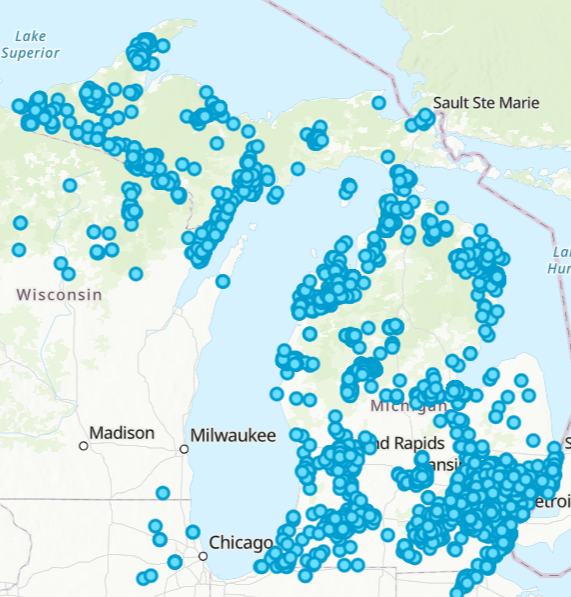
Conservation
Glossy buckthorn threatens conservation efforts in wetland ecosystems due to its ability to host alfalfa mosaic virus, crown fungus, and potentially soybean aphid. These diseases can cause plant death resulting in decreased agricultural yield according to research done at Utah State University. With this plant impacting ecosystems and agriculture as an invasive species, increasing public awareness can be the first step in taking action. Additionally, this species can become densely populated prohibiting native species from receiving valuable resources like sunlight. Invasives like this spread through the mature seeds within the fruit, commonly by frugivorous (fruit-eating) birds. Additionally, small rodents may cache the fruit which can later lead to new plant growth when forgotten. Each of the berries contain three to four seeds which can remain viable for several years, further complicating eradication efforts.
The Midwest Invasive Species Information Network (MISIN) created an interactive map beneficial in tracking the spread of this species and guiding conservation efforts. If recognized early into the invasion with the aid of maps like these, there is a possibility for eliminating the population using multiple methods of control. While the more obvious and aggressive approach may be cutting the top, this opens the door for sprouting and production of fruit within the same season according to the Michigan DNR. Furthermore, the USDA Forest Service recognizes the perseverance of glossy buckthorn after controlled fires and top killing creating the perfect storm for regeneration. Additionally, the preference to grow in an area with sunlight would prevail with this technique as the seedlings around mature plants would have a higher chance of propagation when the overstory is cleared. When considering the various control methods, an integrated pest management (IPM) approach should be taken for the best results using multiple methods from chemical to prescribed burns depending on local ecology. However, each control method often requires follow-up treatments due to how prolific this plant is.
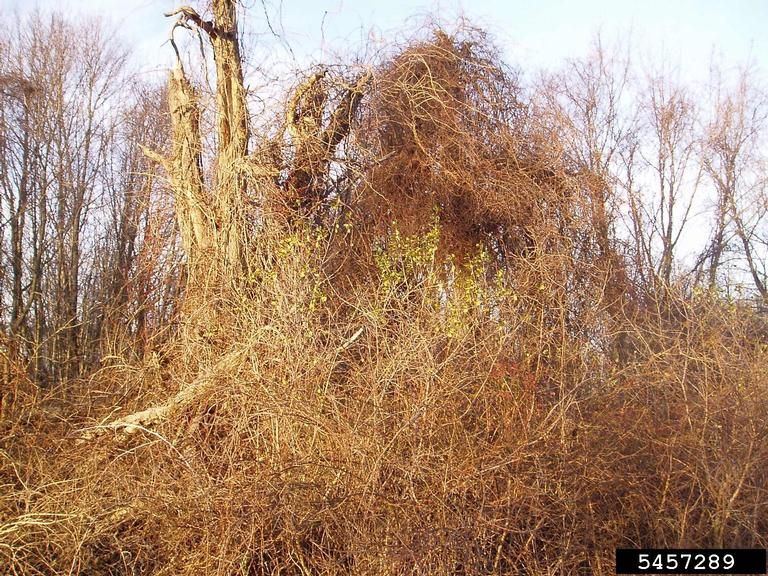
Mechanical Control
When volunteers are plentiful and the infestation is not overwhelming, mechanical control methods may be a good choice for this plant. Younger plants in sandy soils may be easy to hand pull from the ground to remove the plant and roots. When mature plants are plentiful, it can become a greater challenge to remove the vegetation at the root. In this case, girdling can be useful to remove parts of the tree surface to interrupt nutrient flow. Furthermore, flooding can be a mode of control as glossy buckthorn has an affinity for moist soils, typically found in wetlands. When done correctly, flooding can restore historical ecological balance in the area limiting disruption to surrounding native plants. If mechanical control is the answer for your area, be conscious of disposal methods and ensure roots are dried and fruit is properly bagged to prevent further establishment.
Chemical Control
Alternatively, glossy buckthorn can be controlled through cutting combined with herbicide application. With this type of chemical control, it is important to understand the most effective time and type of treatment to minimize negative impacts for native species. Common methods of herbicidal control on this woody invasive include foliar application, cut-stump, girdling, basal bark, and injection; however, all chemical use should legally follow the label of each product.
Characteristics
The Michigan DNR classifies this species as a small tree or shrub reaching almost 18 feet tall with simple, untoothed, glossy leaves alternating either side of the stem or branch. Small, greenish-white flowers can be found in clusters throughout late spring and summer turning into dark purple, pea-sized fruits in late summer. Despite the name, the bush does not actually have any thorns. When cut, the inner bark has a distinctive orange hue that can aid in positive identification year-round. In the winter, this plant can be identified with the scaleless rust-colored buds in addition to the blotchy woody branches with lighter raised nodules.
There can be several look-alikes for this species including other buckthorns and dogwoods. Common buckthorn can be distinguished due to characteristic finely toothed leaves with fewer veins in addition to flowers with four petals instead of five. Additionally, this species is truer to its namesake as there can be a thorn at the end of the branches. Alder-leaved buckthorn is a native species that is less than 3 feet tall with identifiable rounded teeth along the leaves. This native buckthorn also lacks flowers with petals. In contrast, dogwoods have similar leaves without teeth, however they are arranged in an opposite pattern. The blue to white fruit and flowers are clustered on red stems instead of at the branch. If leaves are present, the underside of a glossy buckthorn leaf is shiny whereas a dogwood leaf is not according to Michigan Tech Keweenaw Invasive Species Management Area (KISMA).
Get Involved
To report invasive species in Michigan like glossy buckthorn, utilize the MISIN reporting tool online or in the app. If you want to contribute to the control of invasive species like glossy buckthorn in Michigan, consider joining MUCC at an On the Ground event. We will be at Gourdneck State Game Area in Portage this Saturday, January 18th for an invasive species removal starting at 9 am. We look forward to seeing you there!

